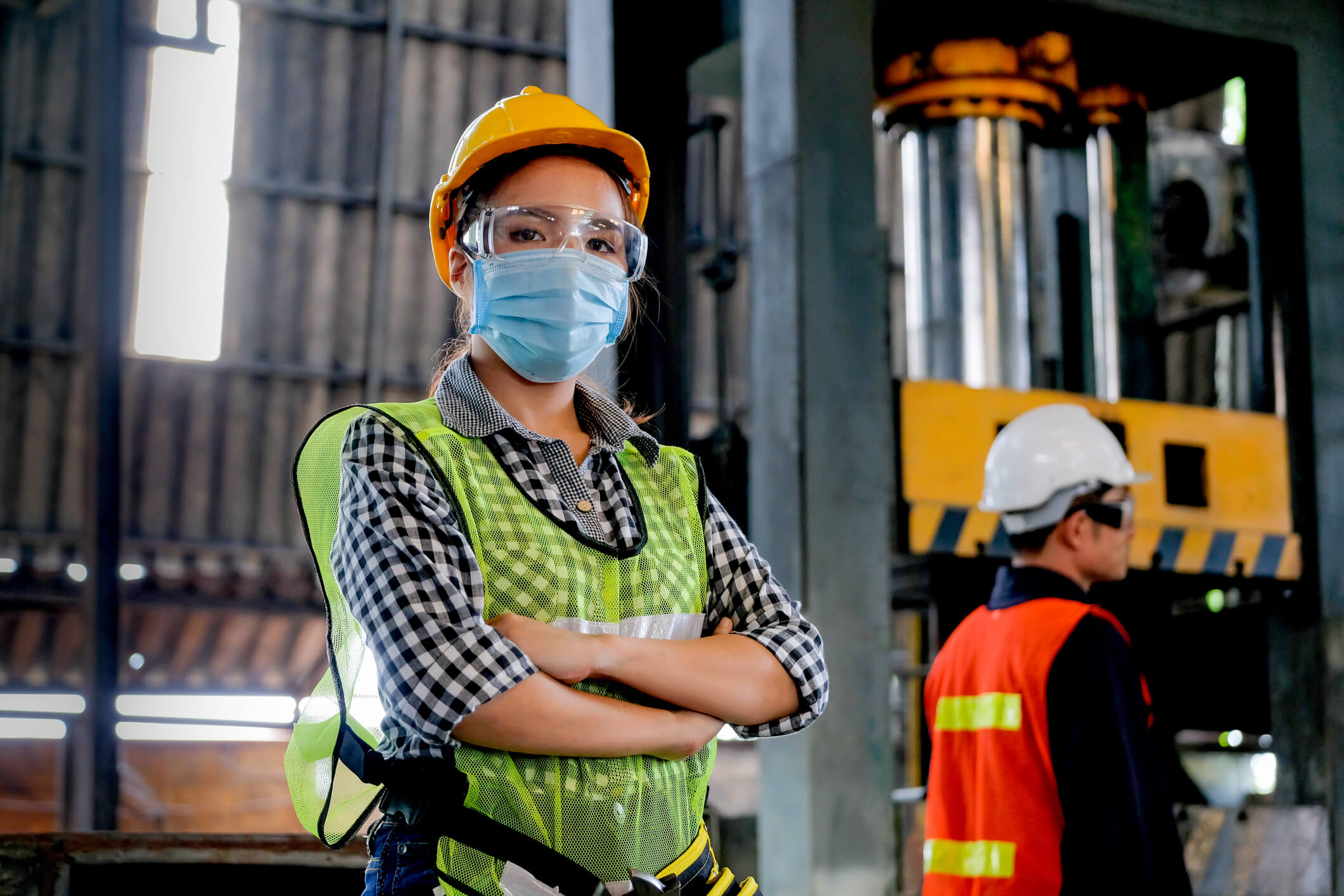The effects of building construction on wellness and human health are becoming a more significant concern in the construction industry. As the industry attempts to fulfill new requirements related to wellness and human health, an important concept is using different construction finishes and materials.

What is the concern?
An evolving focus is whether specific materials contain poisons, chemicals, or other products that could harm wellness and human health at relatively low doses. Poisonous chemicals can show their effects during manufacturing, the use of the product, or its disposal.
They might be cancer-causing or affect the respiratory, endocrine, neurological, and other human body systems. For example, paint on the wall might produce volatile organic compounds (VOCs) or particleboard might have formaldehyde, flooring might have phthalates, and most furniture is coated with flame retardant. Each material has its hazards and, in combination, can be extremely harmful to human health.
Research has been conducted which established that reducing exposure to toxicants has some measurable health advantages. A current study displays that lessened VOC emission in the workspace can enhance cognition, which is a piece of good news for an employer whose operating budget is almost wholly tied to worker productivity and cost.

The wellness and health care system is the same reduced by measures like removing formaldehyde, which has shown some potential to lessen asthma signs by over half. Numerous studies claim that, overall, these sorts of interventional measures are more cost-effective than medical treatment of illness.
As a market, we have developed more confidence when speaking regarding the environmental effects of the products we consume. Data are concerned with recycled original material or content. For instance, they have become ordinary places.
But a similar cant is said regarding data concerned with human health impacts. The market now avoids various “worst offending” materials, like asbestos and lead, because of government regulation. Even for these products, there was a years-long interval between the scientific connection of the health risks they modeled and the execution of regulatory action for the poisons mentioned earlier. There are some concerning regulations to address their use.
What is a construction professional to do?
Some programs and systems are in place to help evaluate the materials. One such system is the LEED evaluation system. The system has long satisfied construction projects for selecting products with low urea-formaldehyde and VOCs.
The newest version LEED v4 presents evaluates the material ingredients, which rewards projects for tracking at least 20 products where the manufacturers have entirely revealed the ingredients it covers. This may look trivial but is, in fact, a typical exercise. Most of the standard formats for a manufacturer to reveal products are through a health product declaration (HPD), an online database or publication, like pharos, or attaining a third-party certification like cradle to cradle. Different websites and the database of products reveal their ingredients entirely like pharos, cradle to cradle, and the green wizard certified products database.

Under a similar new credit, a project chasing LEED v4 could earn an extra reward by selecting products that validate a low threat to human health. Other green construction rating processes like the WELL business standard and living construction difficulties propose similar reward mechanisms.
What do you need to know?
We have to begin with similarly treating supplies as energy competence, which affects numerous disciplines in a project and needs organization, critical thinking, and early planning to acquire desired results.
Conclusion
Project teams could influence their product selection to reward element transparency and mainstream this practice among manufacturers. The final goal of transparency is for the constructor to make more effort in making healthier products.
In the long term, construction teams will need to arm themselves with information to precisely evaluate the advantages and hazards of a product based on the information enclosed by the manufacturer.
 About Complete Controller® – America’s Bookkeeping Experts Complete Controller is the Nation’s Leader in virtual bookkeeping, providing service to businesses and households alike. Utilizing Complete Controller’s technology, clients gain access to a cloud-hosted desktop where their entire team and tax accountant may access the QuickBooks™️ file, critical financial documents, and back-office tools in an efficient and secure environment. Complete Controller’s team of certified US-based accounting professionals provide bookkeeping, record storage, performance reporting, and controller services including training, cash-flow management, budgeting and forecasting, process and controls advisement, and bill-pay. With flat-rate service plans, Complete Controller is the most cost-effective expert accounting solution for business, family-office, trusts, and households of any size or complexity.
About Complete Controller® – America’s Bookkeeping Experts Complete Controller is the Nation’s Leader in virtual bookkeeping, providing service to businesses and households alike. Utilizing Complete Controller’s technology, clients gain access to a cloud-hosted desktop where their entire team and tax accountant may access the QuickBooks™️ file, critical financial documents, and back-office tools in an efficient and secure environment. Complete Controller’s team of certified US-based accounting professionals provide bookkeeping, record storage, performance reporting, and controller services including training, cash-flow management, budgeting and forecasting, process and controls advisement, and bill-pay. With flat-rate service plans, Complete Controller is the most cost-effective expert accounting solution for business, family-office, trusts, and households of any size or complexity.




